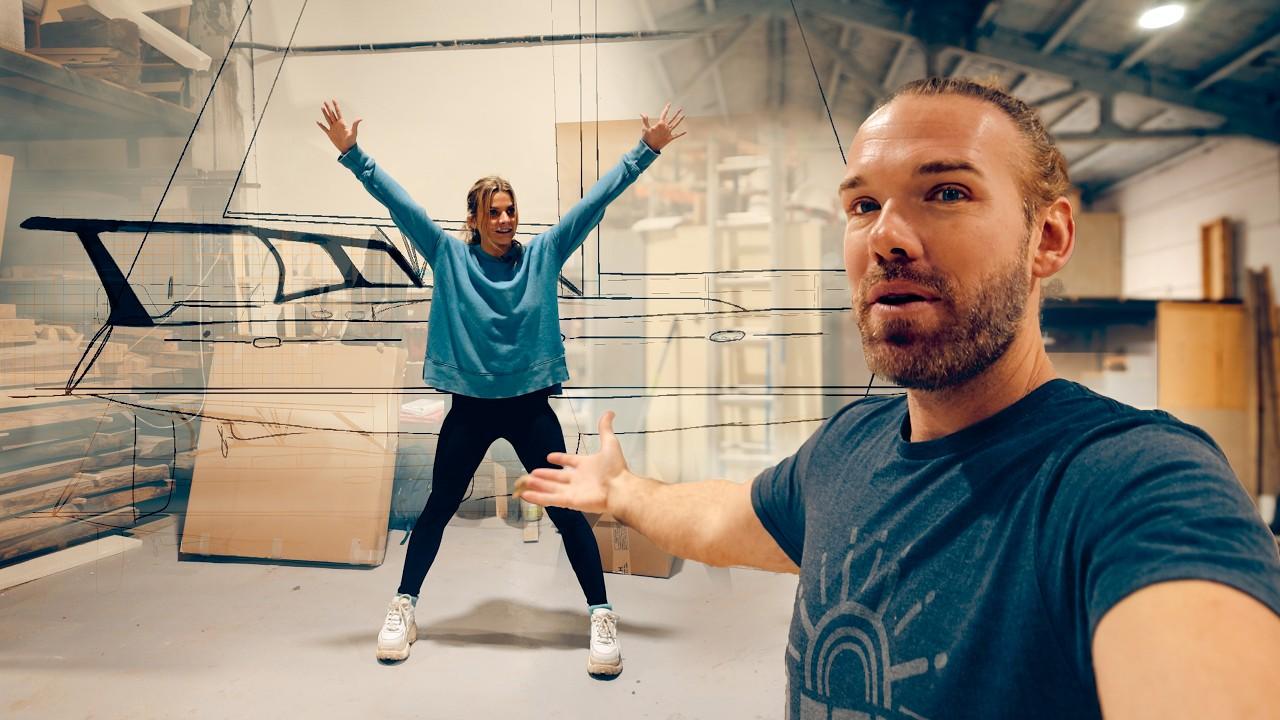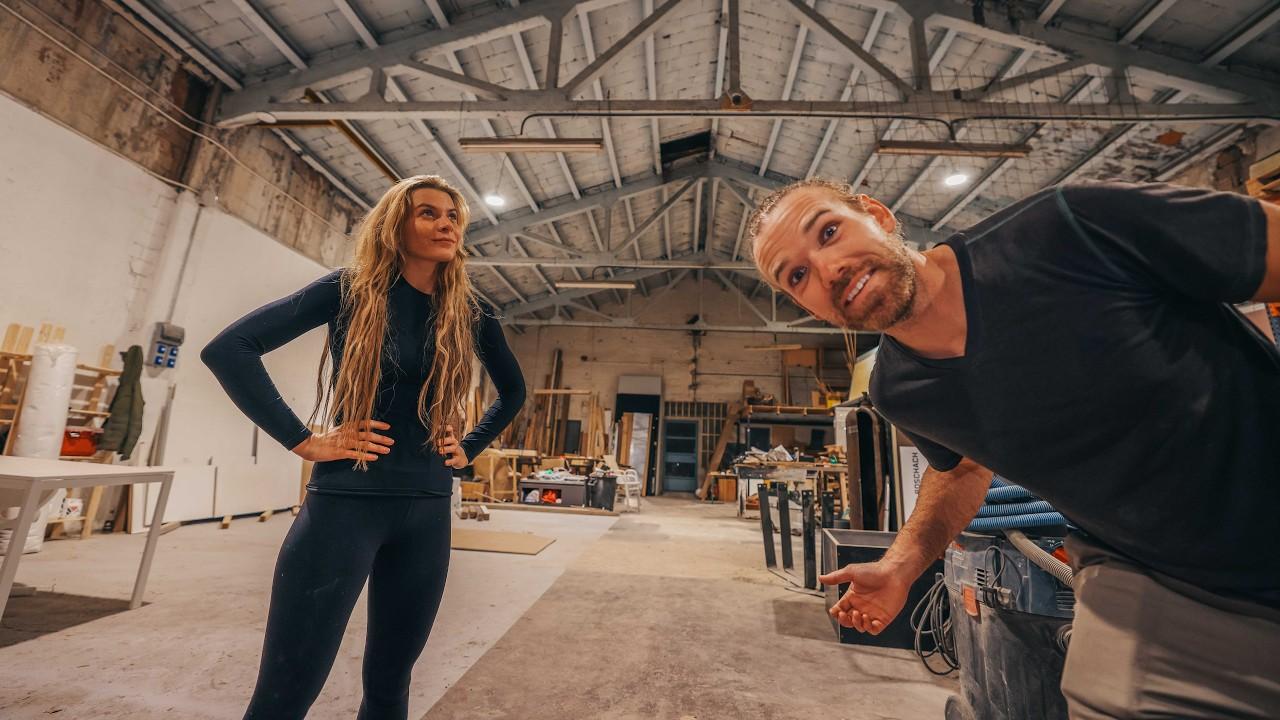In the YouTube video titled “It’s Too Broken To Fix | Expedition Evans 13,” various topics are discussed, shedding light on the challenges faced during the demolition process. The video follows the journey of overcoming hurdles and making progress in renovating a galley. The narrator expresses their optimism while acknowledging the need to take precautions due to previous injuries. The blog post will further explore the details shared in the video and provide additional insights into the demolition saga. Join us as we delve into the difficulties encountered and the determination to push forward in this informative blog post.
1. The Importance of Protecting and Caring for Tendons to Prevent Injury
Tendons are vital for allowing us to move and perform various physical activities. They connect our muscles to our bones, providing stability and transmitting the force necessary for movement. Protecting and caring for our tendons is crucial in preventing injury and maintaining overall physical health.
One of the main reasons why tendon protection is important is the risk of tearing or injuring them. Inflammation and overuse can weaken tendons, making them more susceptible to tearing. This can be incredibly painful and can significantly hinder our ability to perform daily activities. By taking steps to protect our tendons, such as avoiding repetitive motions, allowing for proper rest and recovery, and maintaining good posture, we can reduce the risk of injury.
Additionally, it is important to remember that tendons do not receive as much blood flow as other tissues, which means that they have a slower healing process. Therefore, it is crucial to take care of our tendons to prevent injuries that may take a long time to heal. Incorporating exercises and stretches specifically targeting the tendons can help strengthen and improve their flexibility, reducing the risk of injury. It is also important to listen to our bodies and give ourselves the rest and recovery time needed to prevent overuse injuries. By being proactive in protecting and caring for our tendons, we can maintain their health and functionality for years to come.
2. Strategies for Efficient Progress in Demolition Process
In order to ensure efficient progress in the demolition process, here are some strategies that can be implemented:
-
Plan and prioritize tasks: Before starting the demolition, it is important to have a clear plan and prioritize tasks based on their complexity and importance. This will help in organizing the workflow and ensuring that the most critical areas are addressed first.
-
Utilize proper tools and equipment: Having the right tools and equipment can significantly improve the efficiency of the demolition process. Investing in high-quality tools such as grinders, sanding discs, and gloves can make the job easier and faster. Additionally, using a vacuum to catch the debris can help in keeping the work area clean and prevent fiberglass particles from getting in the air.
-
Divide and conquer: Demolition work can be exhausting, especially when dealing with hard-to-reach areas. To optimize efficiency, consider dividing the tasks and assigning each team member a specific role. For example, one person can operate the grinder while another person catches the debris with a vacuum. This division of labor can help in completing the work more quickly and effectively.
-
Take breaks and practice self-care: Demolition work can be physically demanding, so it is essential to listen to your body and take breaks when needed. Pushing through the pain can lead to injuries and setbacks. Take the time to rest and allow your tendons to heal, especially if there are signs of inflammation. Prioritizing self-care will ultimately contribute to a more efficient and successful demolition process.
By implementing these strategies, you can ensure efficient progress in your demolition process and achieve your desired results in a timely manner. Remember to stay organized, use the right tools, divide tasks effectively, and prioritize self-care to make the process smoother and more productive.
3. Effective Techniques for Tackling Difficult and Hard-to-Reach Areas
When dealing with difficult and hard-to-reach areas during a project, it’s important to employ effective techniques to ensure success. Here are some strategies that can help you navigate these challenging spaces:
-
Take it easy and prioritize safety: If you’re experiencing pain or inflammation, it’s crucial to listen to your body and take the necessary precautions. Pushing through the pain may lead to further injuries and setbacks. Make sure to rest and allow your body to recover before attempting to tackle these areas.
-
Utilize tag-team approach: Some areas may be extremely challenging to access or work on alone. In these cases, it can be beneficial to have a partner or team member work in coordination with you. For example, while grinding a difficult area, have one person operate the grinder while the other ensures that the debris is properly caught and contained. By dividing the tasks, you can optimize efficiency and make the process more manageable.
-
Use appropriate protective gear: When working in these hard-to-reach areas, it’s important to prioritize safety. Wear gloves, goggles, and masks to protect yourself from any debris or harmful substances. This will help prevent any accidents or health hazards that may arise from working in tight or inaccessible spaces.
-
Consider specialized tools and equipment: In order to effectively tackle these areas, it may be necessary to invest in specific tools or equipment. For example, if you need to remove a stubborn seacock, make sure to obtain a tool that is specifically designed for that purpose. Using the right tools can make the job easier and more efficient.
Remember, difficult and hard-to-reach areas require patience, caution, and creativity. By implementing these effective techniques, you can successfully navigate these challenges and achieve your project goals.
4. Essential Tools and Resources for Successful Renovation Projects
In order to successfully tackle renovation projects, it is essential to have the right tools and resources at your disposal. Here are some key items that can make your renovation journey smoother:
-
Safety Equipment:
- Gloves: Protect your hands from sharp objects, chemicals, and debris.
- Safety goggles: Shield your eyes from dust, debris, and harmful particles.
- Dust mask: Prevent inhalation of dust and airborne particles.
-
Basic Tools:
- Hammer: Ideal for removing nails, demolishing structures, and general construction tasks.
- Screwdriver set: Assortment of different sizes and types to remove or install screws.
- Tape measure: Accurately measure lengths and dimensions for precise cuts and installations.
- Pry bar: Useful for removing molding, trim, and other materials.
- Power drill: Versatile tool for drilling holes and driving screws efficiently.
-
Essential Resources:
- Renovation guidebooks: Provide step-by-step instructions and tips for various renovation projects.
- Online tutorials: Access helpful videos and articles on specific renovation tasks and techniques.
- Home improvement forums: Connect with other renovators to seek advice, share experiences, and find inspiration.
Remember, having the right tools and resources is crucial for the success of your renovation project. By investing in quality equipment and utilizing informative resources, you can ensure a smooth and efficient renovation process. So, gather your tools, do your research, and get ready to transform your space into something extraordinary. fiberglass cloth over the areas that need to be fixed rather than using fiberglass resin. This method provides better protection and prevents the fiberglass from getting into our pores. However, despite taking precautions, the heat is still intense and can be uncomfortable. Despite the challenges, we push through and continue with the repairs.
In this episode, we see how determined I am to get back in the race. Although I usually have a high tolerance for pain and push through it, there are times when I need to take it easy to avoid further injury. I’ve learned from past experiences that pushing too hard can result in tearing tendons, so I’ve been more cautious.
I want to take a moment to thank all of you who have been following our journey and supported us throughout this grinding process. It has been a long and challenging journey for us, and we appreciate your patience. But the end is in sight, and this is the final video of the demolition saga.
Despite the challenges, we are feeling optimistic about the progress we’ve made. The galley is nearly complete, with only a few corners left to work on. We’ve made more progress than expected, which is both a good and potentially confusing thing. There are still some areas, like the ski laminated stuff and the difficult-to-reach spots, that require tag-teaming and careful vacuuming to prevent the fiberglass dust from getting in our faces.
In order to continue the repairs, we need to make a trip to the store to get the necessary tools and supplies. We also plan to make a stop at Whole Foods to replenish our energy with some delicious organic energy drinks.
On a lighter note, we discuss an interesting theory about map orientation based on the accelerometer of our phones. We ponder whether sudden movements or breaks while driving would affect the screen rotation. It’s a curious question that we might test out in a controlled setting.
Thank you again for your support and for sticking with us through this challenging journey. We hope you enjoyed this episode and we’ll see you in the next one as we continue our expedition.



